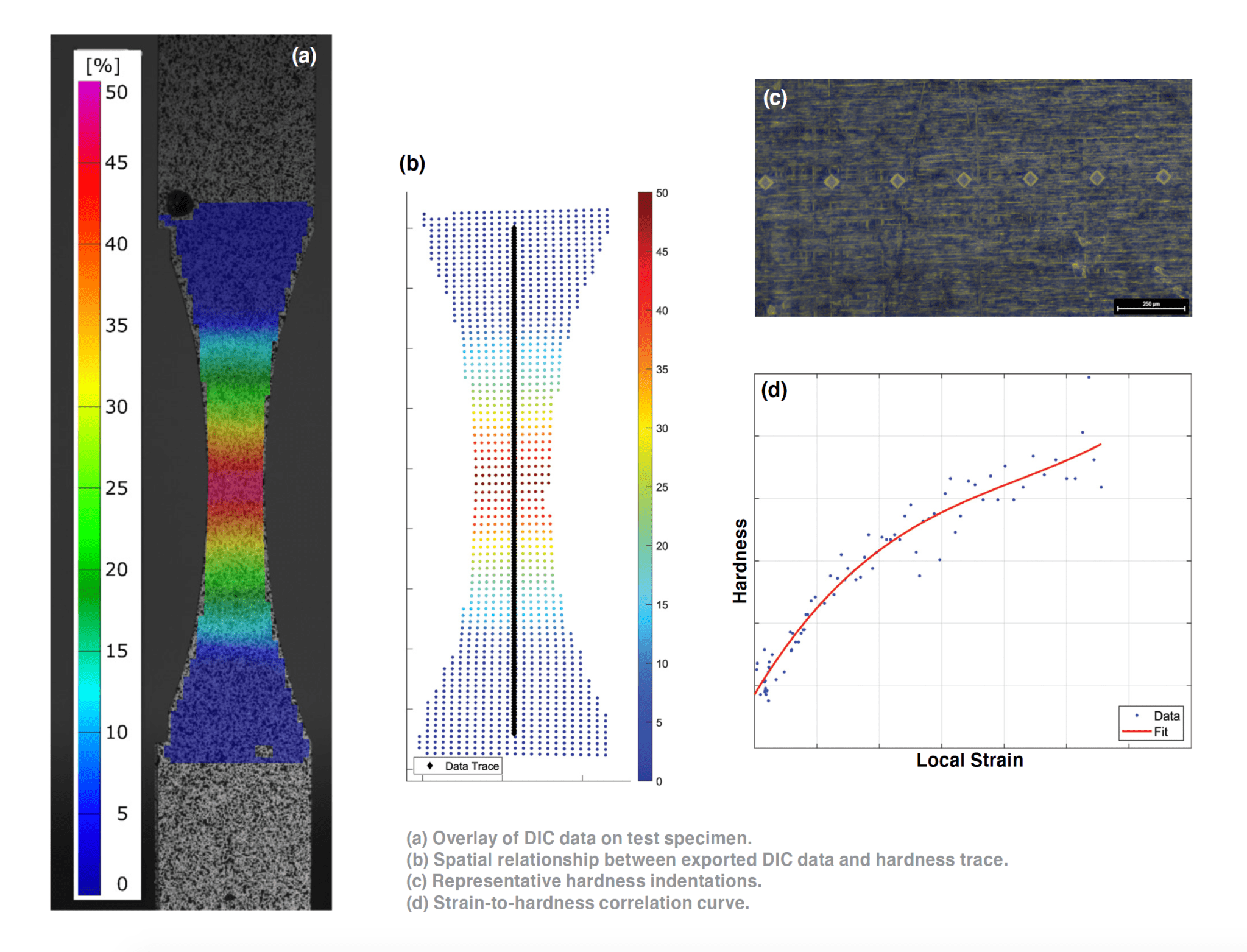Download PDF: Strain-Hardness Correlation Testing Technique
A new material analysis technique was developed at the MSFC Materials & Processes Lab to efficiently generate correlation curves between indentation hardness measurements and localized material strain.The technique employs digital image correlation (DIC) to map local plastic strain development in a tensile test specimen under stress. The test specimen includes a constant radius gage section designed to establish a plastic strain gradient along the longitudinal axis of the test specimen. The hourglass-shaped test specimens are then loaded to a desired stress level using standard tensile testing procedures while monitoring the specimen surface with DIC.
Post-test, the specimens are longitudinally sectioned, and a trace of micro-hardness indentation measurements are obtained along the cross-section. With careful attention to specimen orientation and relationships between spatial reference features on the test specimen, a corresponding local strain value can be determined for each microhardness measurement from the DIC data obtained during the initial test. When performed using thin sheet materials, the through-thickness strain variations are minimal, which allows for direct correlation of the DIC information with microhardness measurements.
Traditional methods for correlating hardness and material strain involve testing many specimens, one for each plastic strain value of interest. By taking advantage of DIC techniques and automated hardness measurement, the developed technique requires only one test specimen for the generation of the entire correlation curve, from no plastic strain up to material failure. The method is particularly suited to evaluating thin sheet materials, but could be extended to thicker sections with appropriate adaptations.
The resulting strain-hardness correlation curve is a tool to inform other material evaluations by providing a calibration between hardness and the plastic strain developed in the material. The technique is particularly suited to evaluations where specimen geometry or material availability preclude full-size mechanical test specimens; for example, a hardness correlation curve can be produced to aid in the evaluation of a complex additively manufactured part by using a bespoke test specimen produced alongside the part. Other example applications would include investigations on the effect of bending operations on sheet metal, metallurgical failure analyses of components, or surveys of plastic strain effects due to thermal processing.
For more information, contact William Tilson, william.g.tilson@nasa.gov or Douglas Wells, douglas.n.wells@nasa.gov.

























